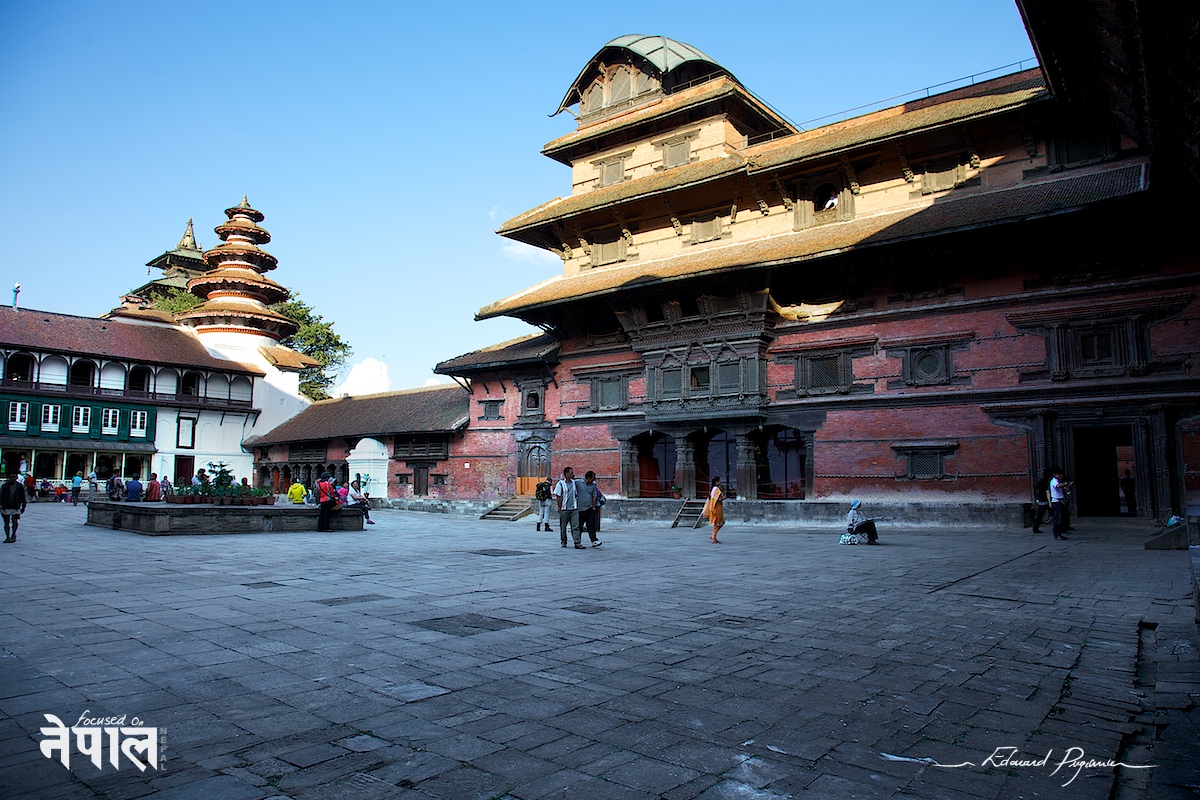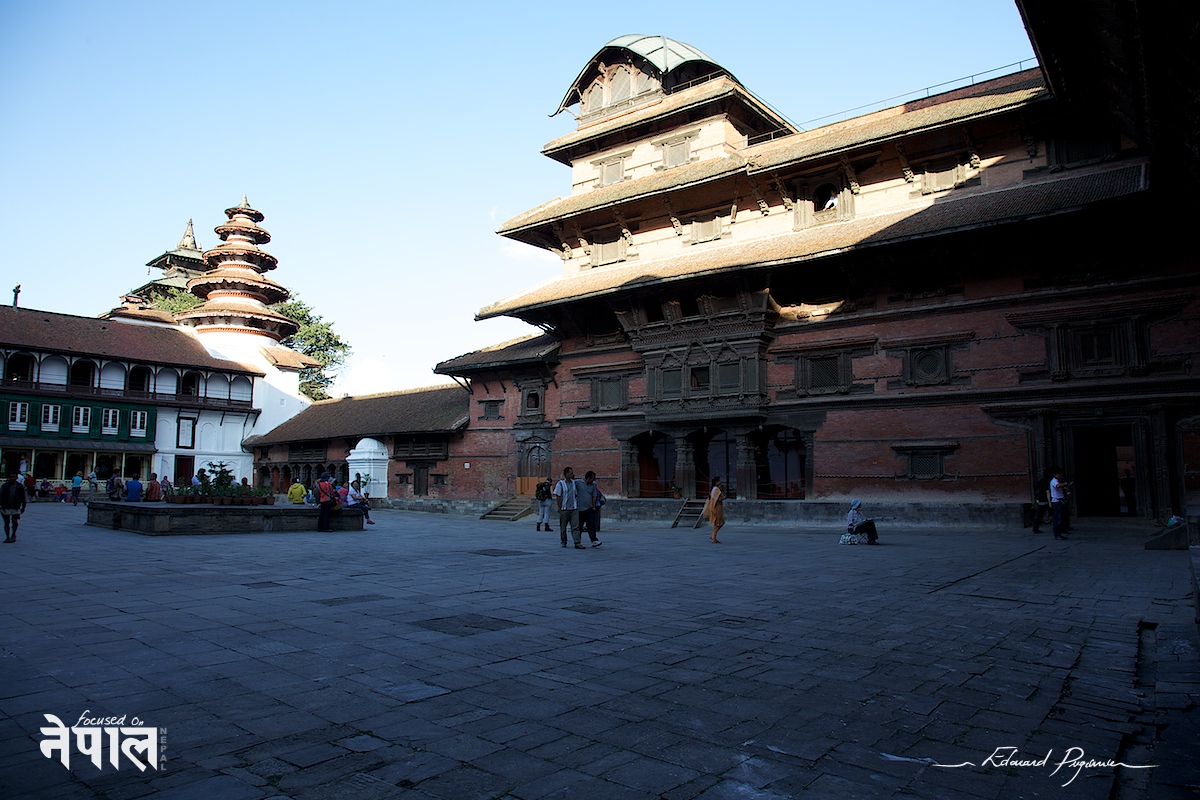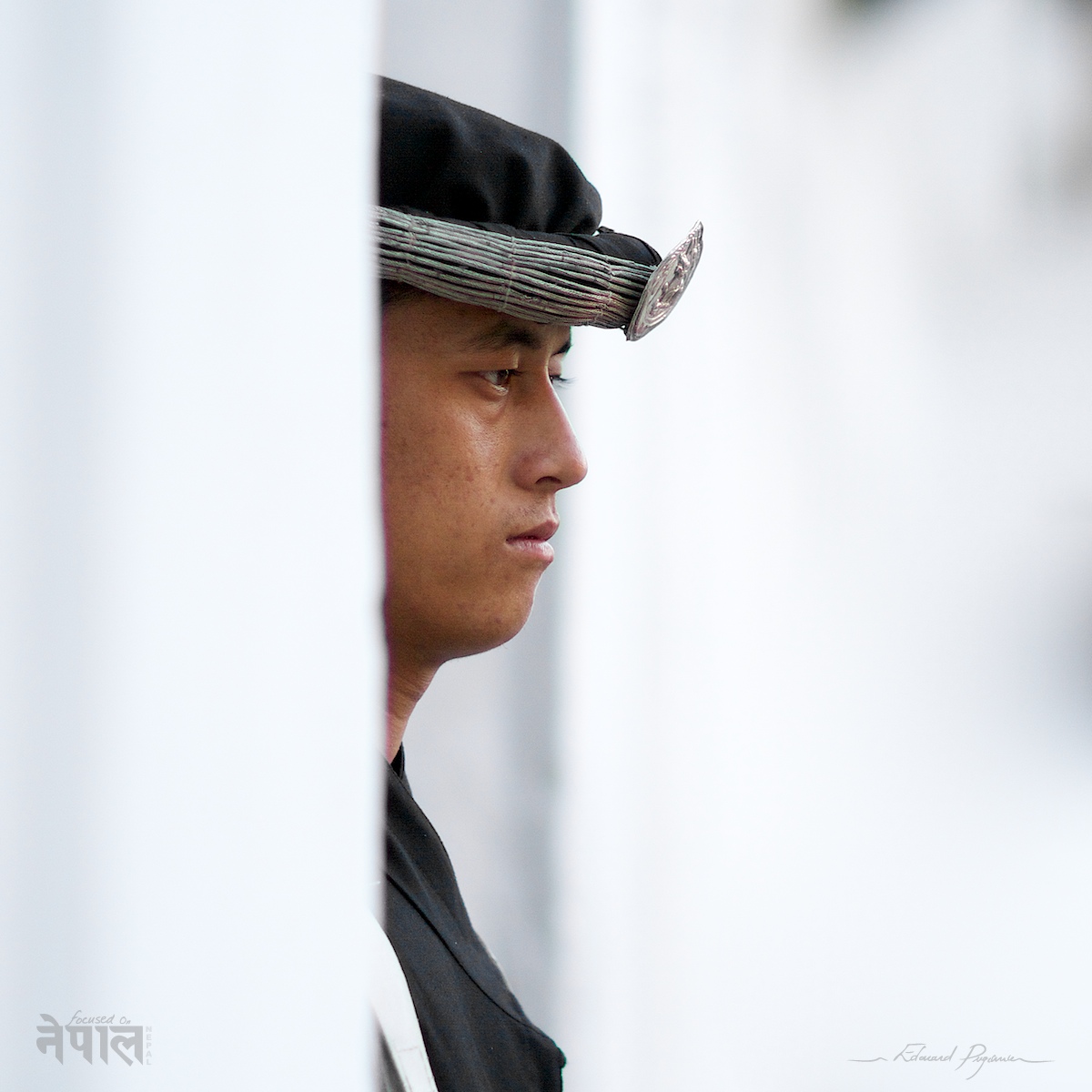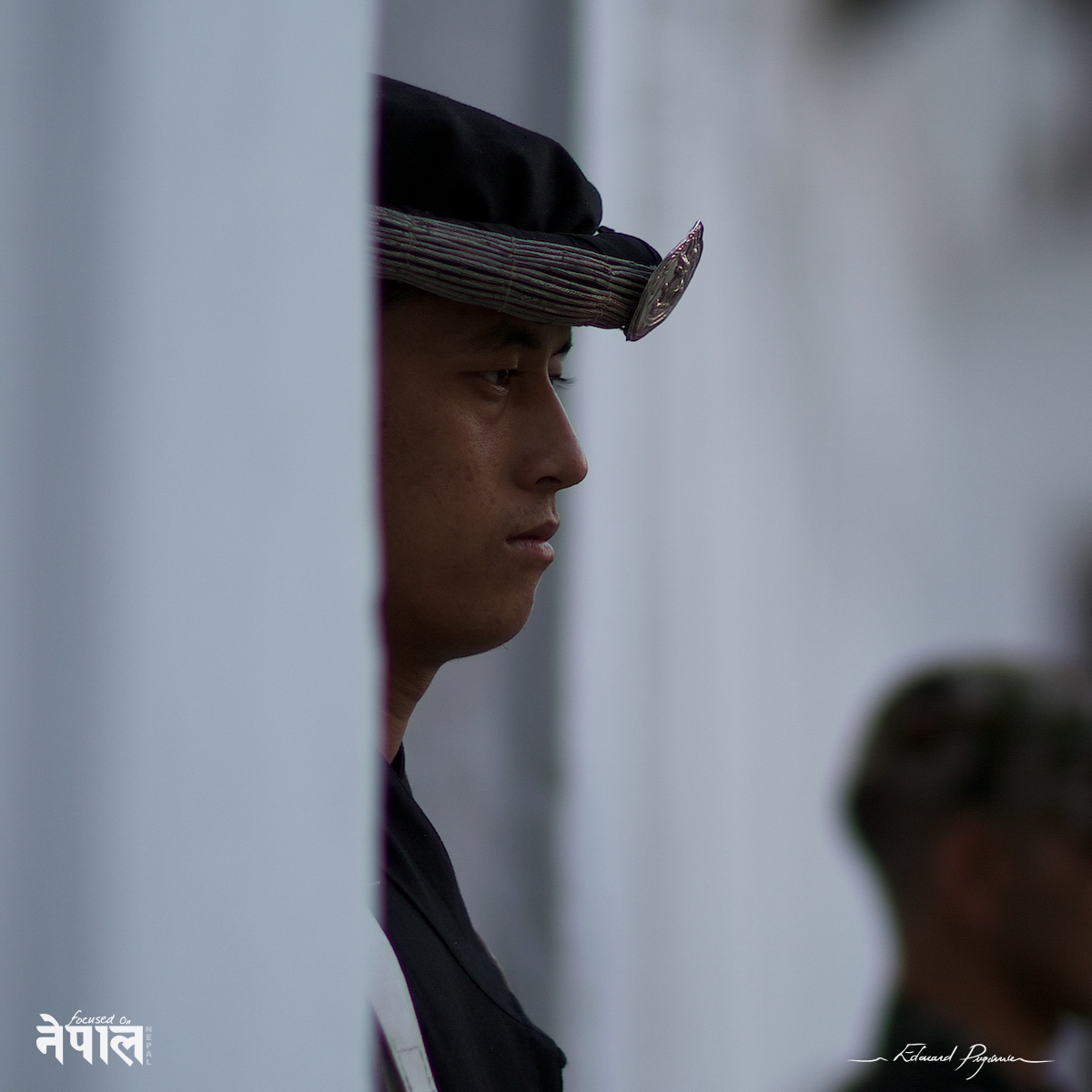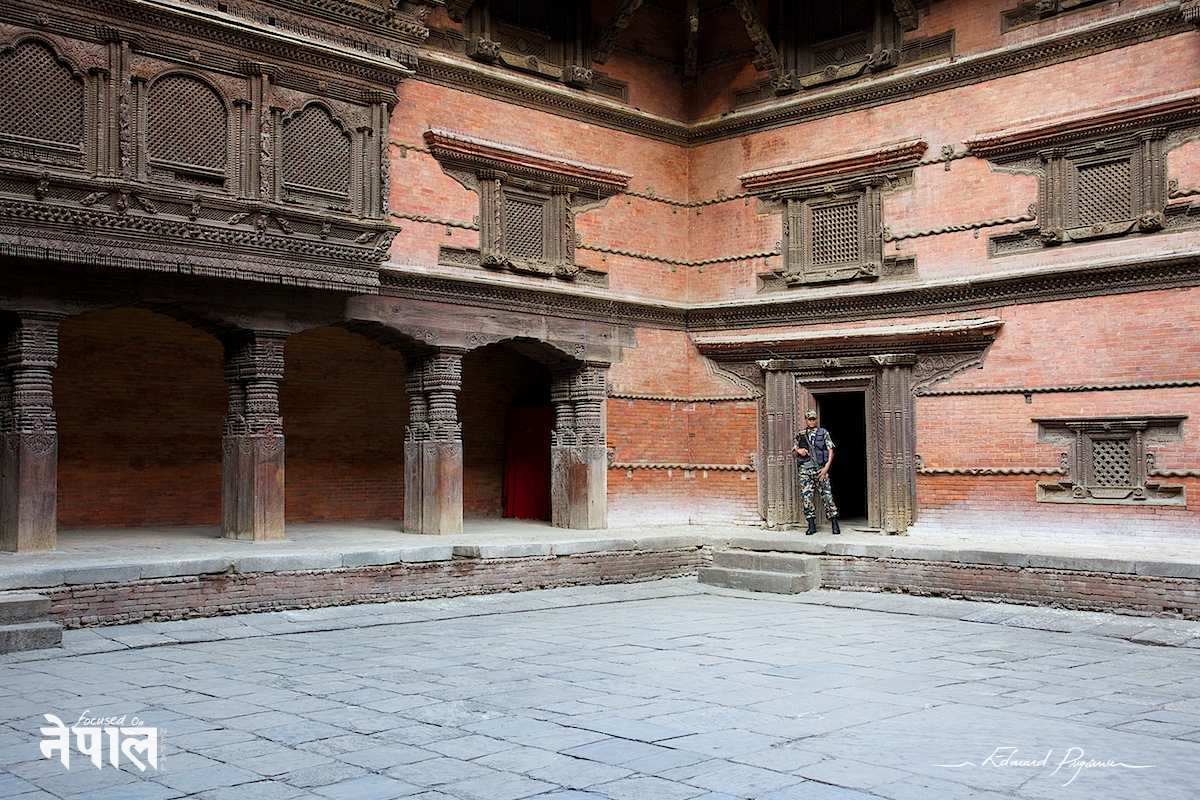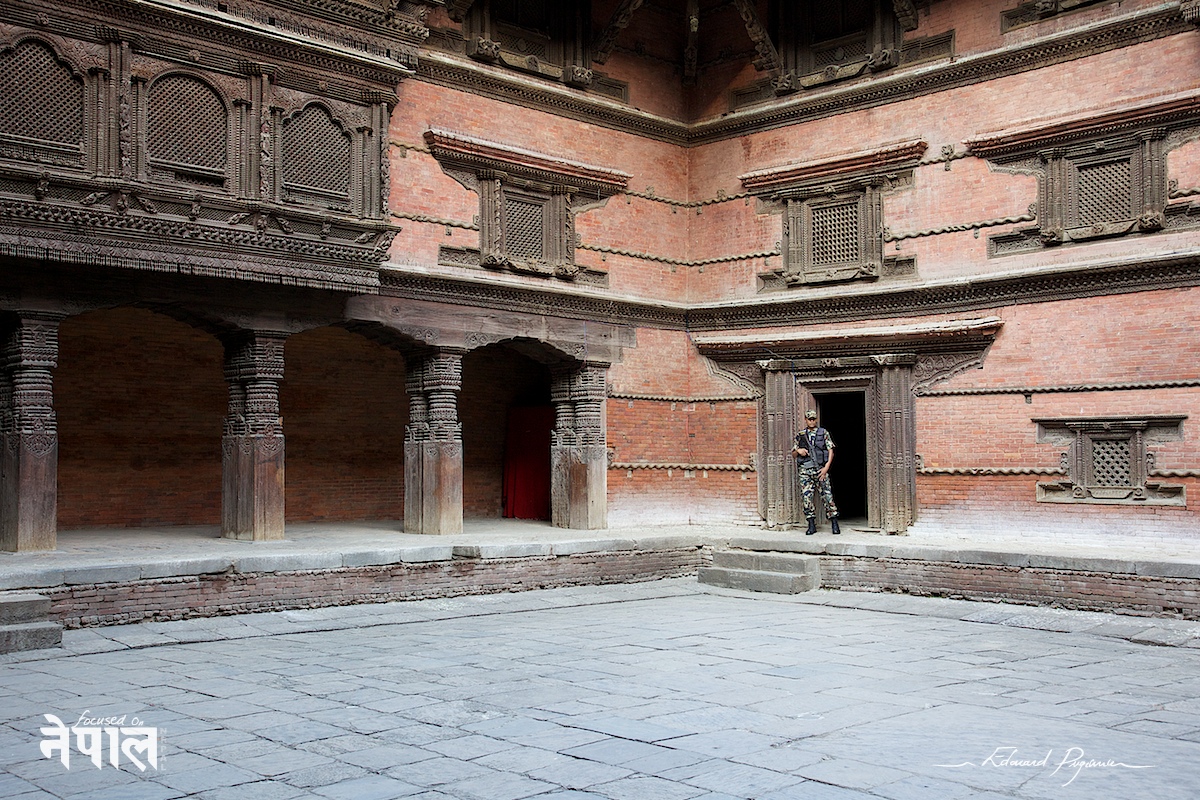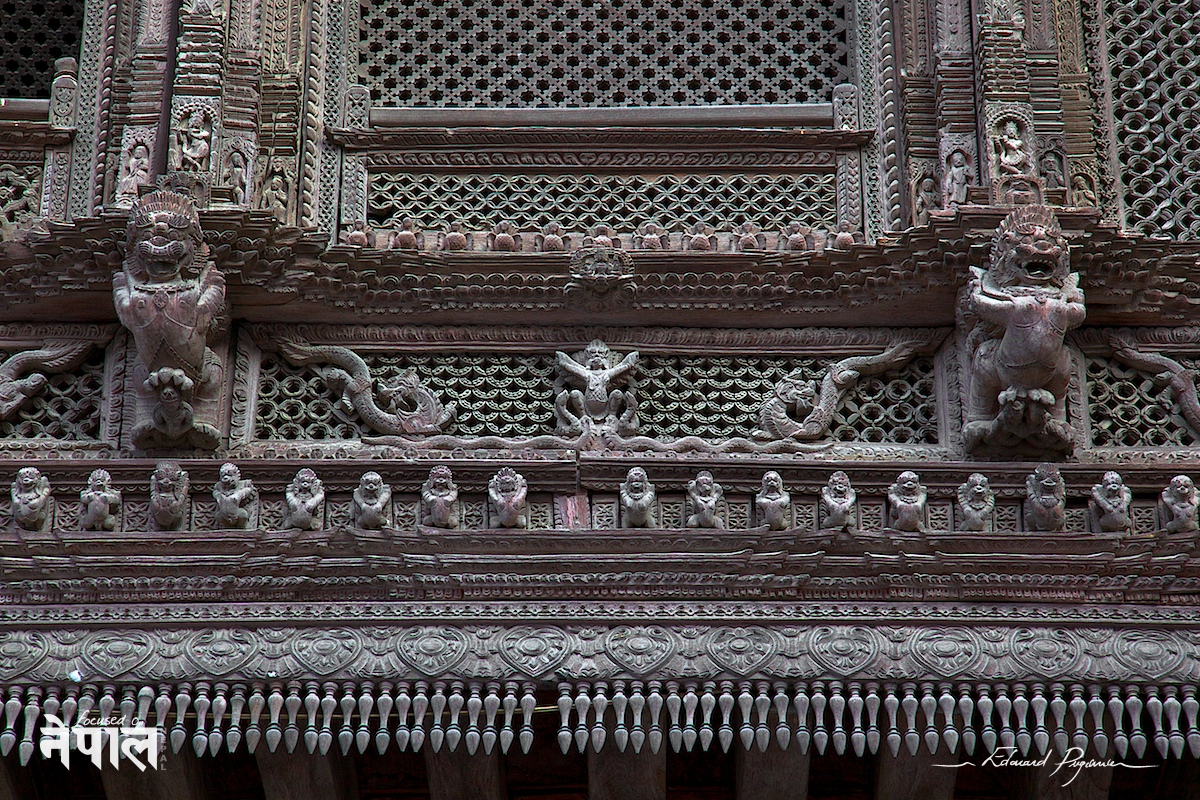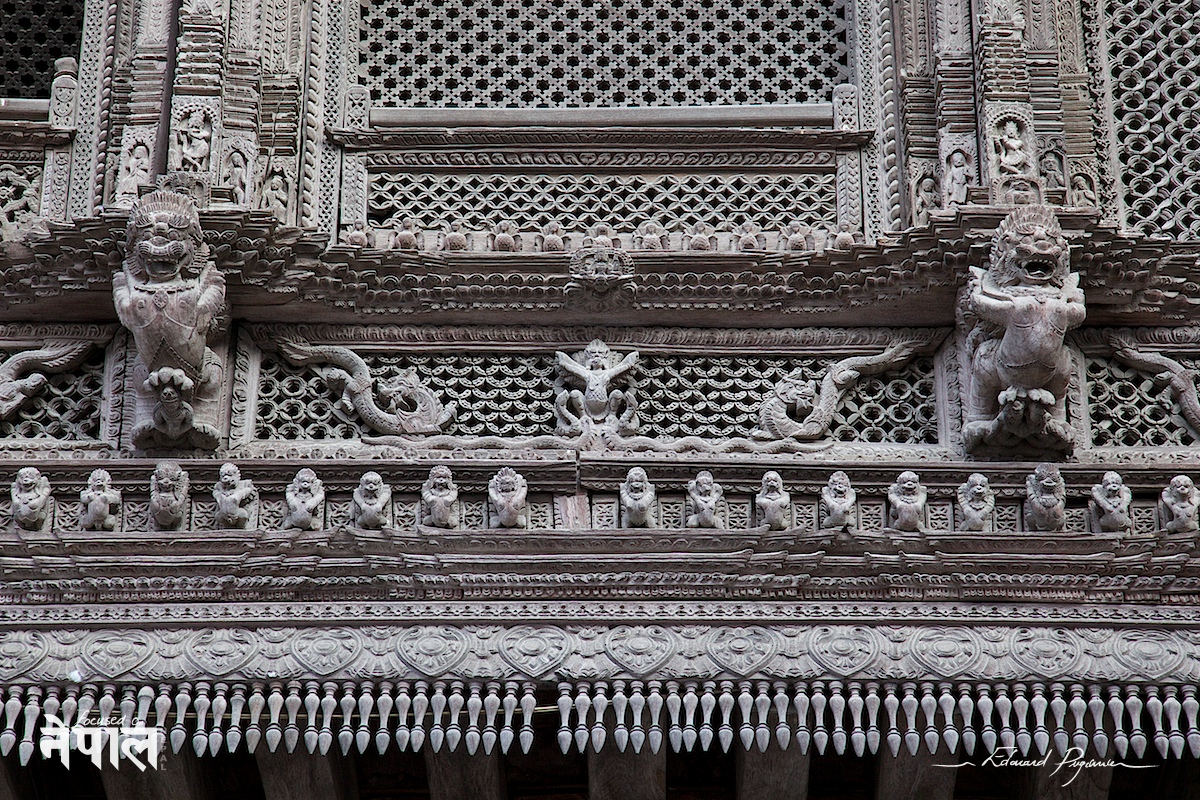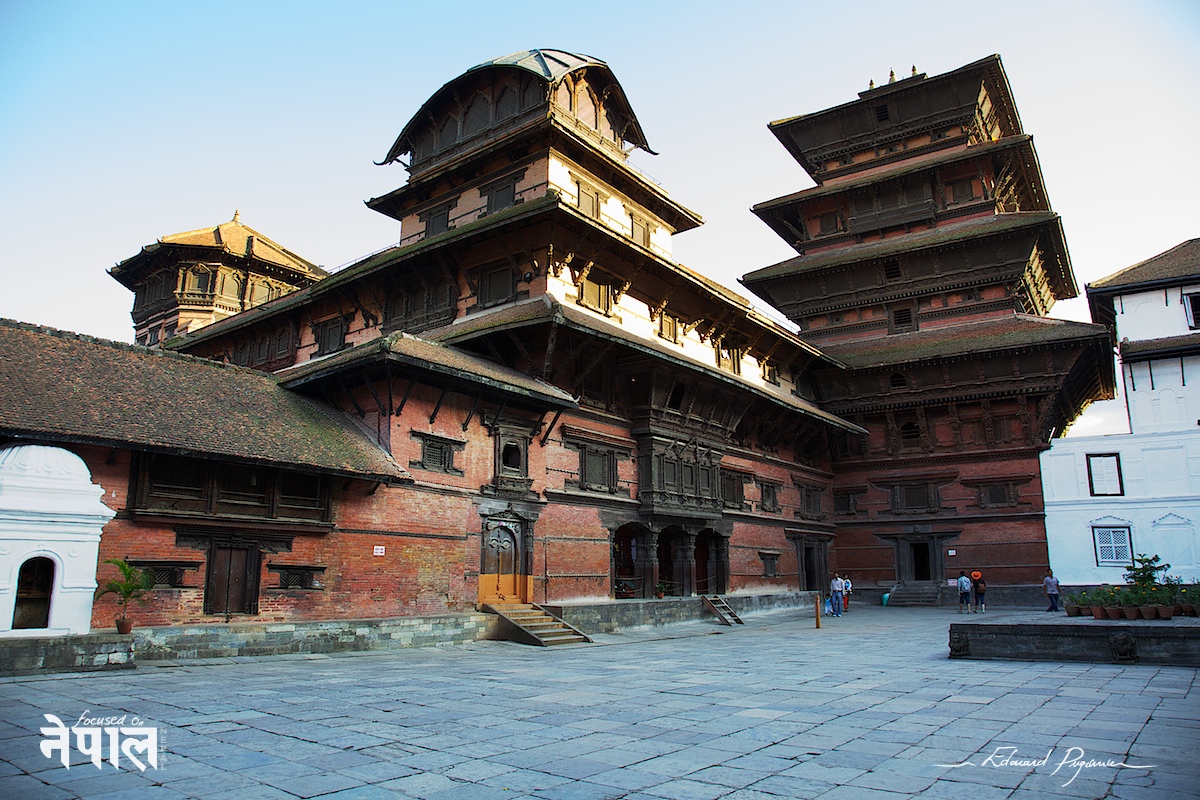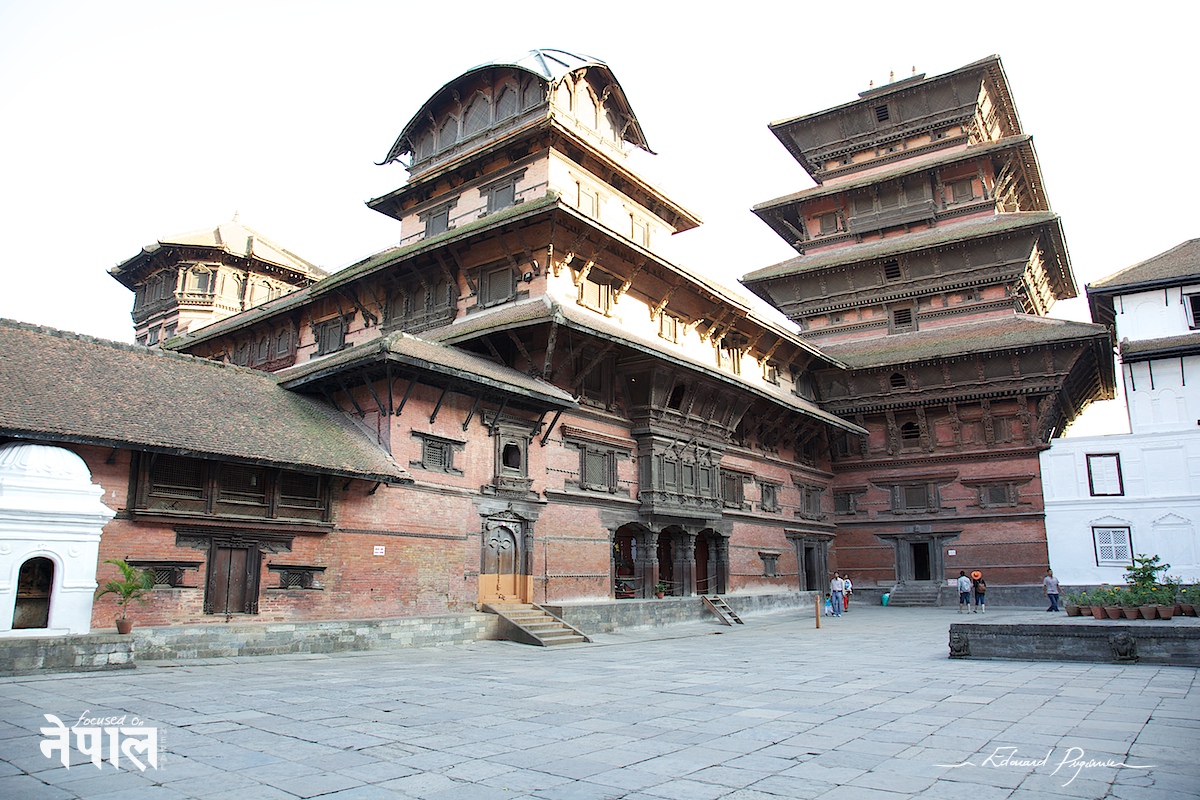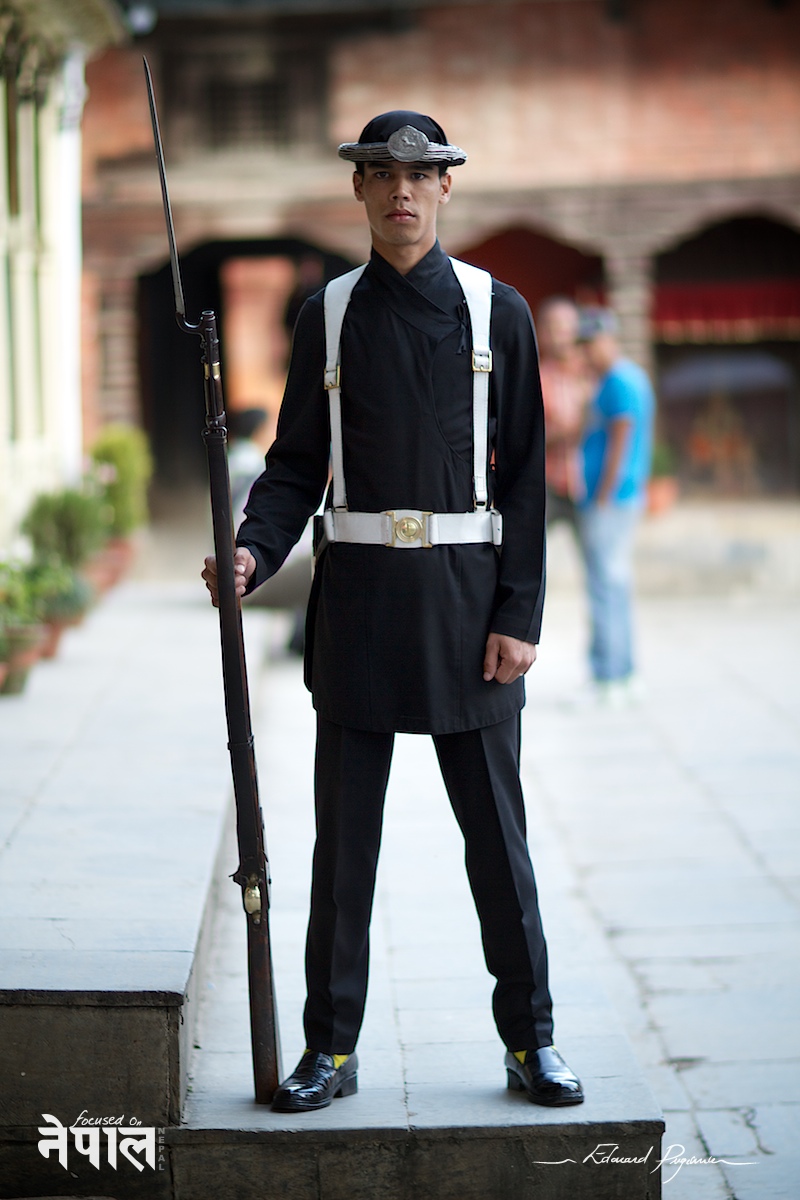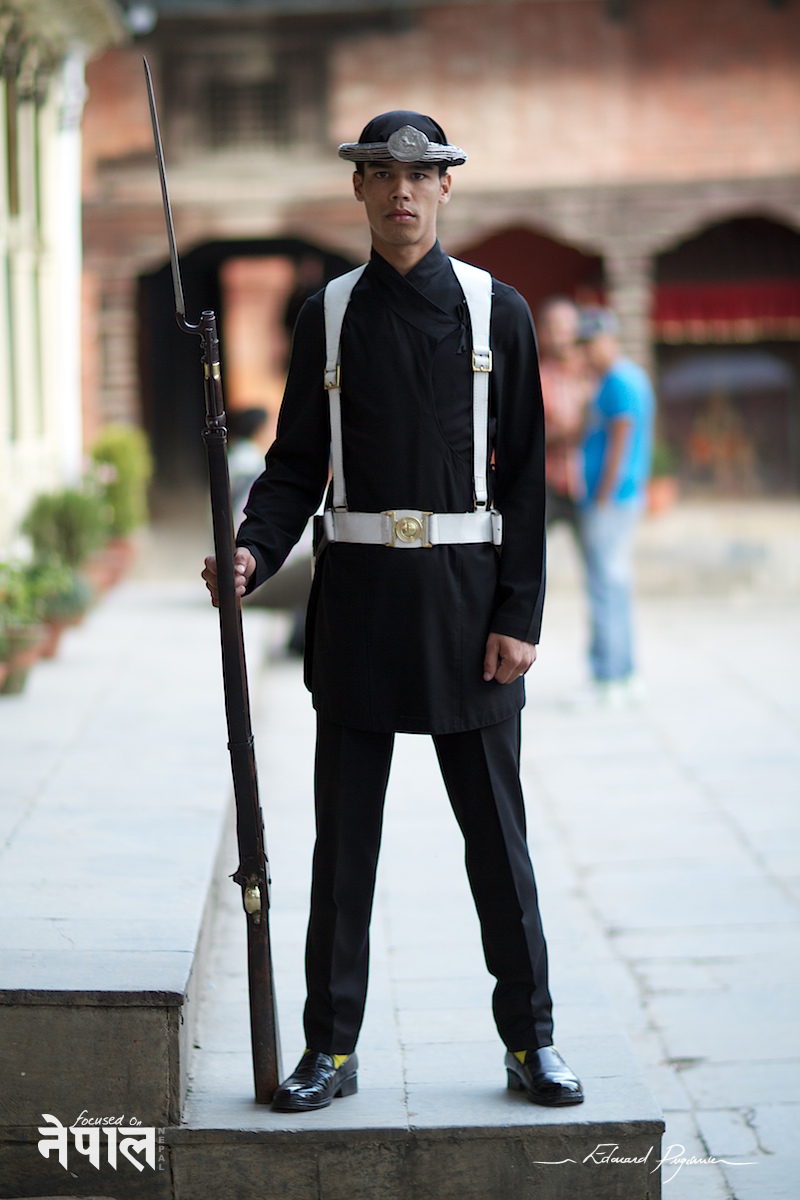Hanuman Dhoka is a complex of structures with the Royal Palace of the Malla kings and also of the Shah dynasty in the Durbar Square of central Kathmandu, Nepal. It is spread over five acres. The eastern wing with ten courtyards is the oldest part dated to the mid 16th century. It was expanded by King Pratap Malla in the 17th century with many temples. Sundari Chowk and Mohan Chowk in the north part of the palace are both closed. In 1768, in the southeast part of the palace, four lookout towers were added by Prithvi Narayan Shah. The royal family lived in this palace till 1886, where after they shifted to Narayanhiti Palace. The stone inscription outside is in fifteen languages and legend states that if all the 15 are read milk would spring from the middle of stone tablet.
Nasal Chowk
Ahead of the main entrance, adjoining the Hanuman Temple, is the Nasal Chowk courtyard (‘Nasal’ means: “dancing one”) named after the image of dancing Shiva located on the east side of the square. This is the square where Birendra was crowned as king in 1975, on the platform in the middle of the courtyard. At the south side of the courtyard, stands the nine storey Basantapur Tower. While the courtyard was built during Malla Period, the buildings around it, which depict intricately carved doorways, windows, and struts, were creations of the Rana rulers. Nasal Chowk is a rectangular in a north–south direction with entrance from the northwest corner.
